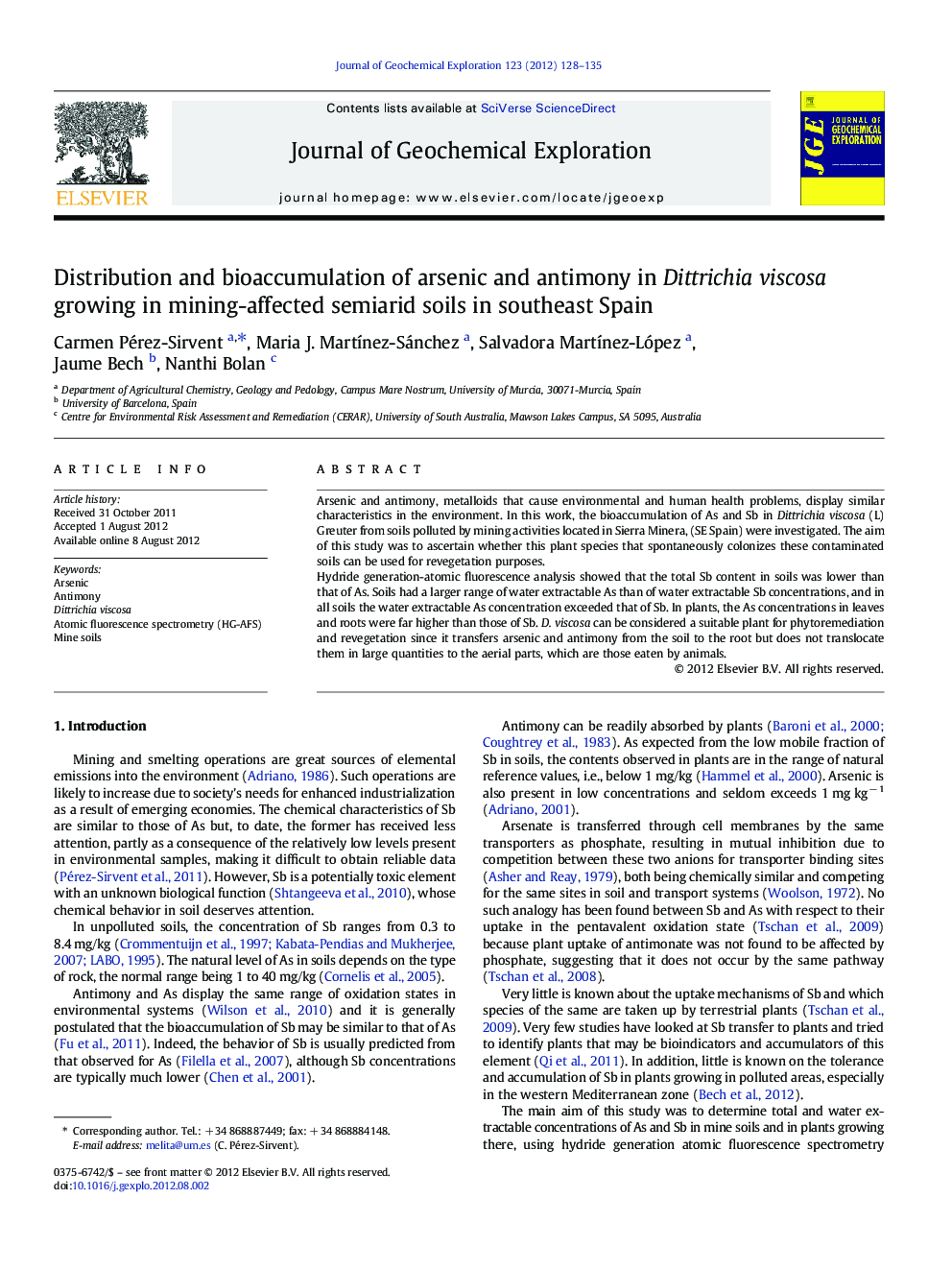| Article ID | Journal | Published Year | Pages | File Type |
|---|---|---|---|---|
| 4457575 | Journal of Geochemical Exploration | 2012 | 8 Pages |
Arsenic and antimony, metalloids that cause environmental and human health problems, display similar characteristics in the environment. In this work, the bioaccumulation of As and Sb in Dittrichia viscosa (L) Greuter from soils polluted by mining activities located in Sierra Minera, (SE Spain) were investigated. The aim of this study was to ascertain whether this plant species that spontaneously colonizes these contaminated soils can be used for revegetation purposes.Hydride generation-atomic fluorescence analysis showed that the total Sb content in soils was lower than that of As. Soils had a larger range of water extractable As than of water extractable Sb concentrations, and in all soils the water extractable As concentration exceeded that of Sb. In plants, the As concentrations in leaves and roots were far higher than those of Sb. D. viscosa can be considered a suitable plant for phytoremediation and revegetation since it transfers arsenic and antimony from the soil to the root but does not translocate them in large quantities to the aerial parts, which are those eaten by animals.
► In the studied soils, the bioavailability of Sb is generally lower than that of As. ► Dittrichia viscosa is recommended for revegetation of soils degraded by mining. ► Dittrichia viscosa retains Sb and As in the roots. ► As is efficiently excluded from the edible parts.
